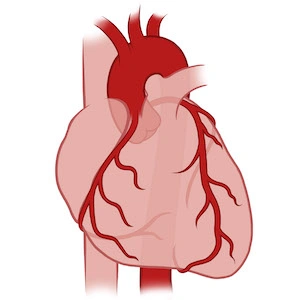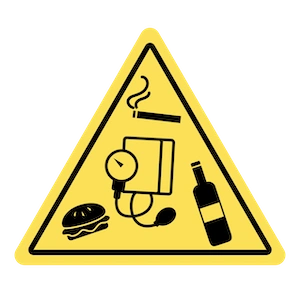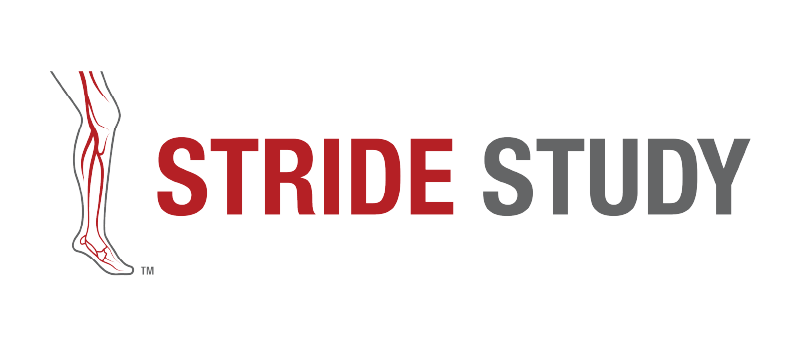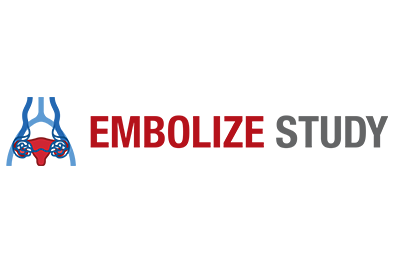
Month-long Campaign Promotes Importance of Perennial Heart Health
More than 800,000 people in the United States die of cardiovascular disease each year.
Cardiovascular disease is the umbrella term for diseases that affect the heart or blood vessels. Types of cardiovascular disease include coronary artery disease, congenital heart defects, peripheral artery disease, stroke, and other heart disease.
Of all the types of cardiovascular disease, heart disease is responsible for the majority of deaths. Each year, more than 600,000 (one in every four) people die from heart disease, a variety of conditions that affect heart structure and function. Heart disease can happen to anyone at any age including children. Alarmingly, about half of Americans have at least one of the top three risk factors for heart disease: high blood pressure, high cholesterol, and smoking.
Heart Health
However, it is important to remember that people can choose to live heart healthy lives. And while no particular day is better than another to focus on one’s heart health, February is actually a great month to start! Already considered the “heart of the calendar” due to Valentine’s Day, February has served as American Heart Month since 1964. Numerous health organizations, including the National Heart, Lung, and Blood Institute (NHLBI) and the Centers for Disease Control and Prevention (CDC), engage in the annual campaign by raising awareness about heart disease, as well as how to take care of this important organ.

Heart Anatomy
The heart, an organ located near the lungs in the center of the chest, pumps blood through the body’s circulatory system — a vast network of arteries, capillaries, and veins. The body’s cells and tissues rely on healthy blood flow through the network for the delivery of life-sustaining oxygen and nutrients, as well as the removal of waste and carbon dioxide.
The heart has four chambers surrounded by muscle and other tissue. The chambers are separated by valves which keep blood flowing in the right direction. The heart supplies oxygen-rich blood to its muscle and tissue via coronary arteries on the heart’s surface.


Furthermore, a piece of clot (embolus) can break off from its point of origin, flow through the bloodstream, and lodge in another vessel such as an artery in the brain. A blocked artery in the brain can cause an acute ischemic stroke due to the lack of oxygen reaching brain cells in the affected area.
Symptoms
Heart disease is sometimes described as “silent” because it often has no warning signs or symptoms. This is especially true for women. It’s not until a person suffers a heart attack, heart failure, or an arrhythmia that the underlying condition is discovered. In cases of heart attack, men typically report a dull ache in the chest that occurs during physical activity and stops at rest, while women often report symptoms of nausea, vomiting, and fatigue. When women feel chest pain, they often report a tightening pain that occurs during routine activities or even while resting.
Symptoms, which often vary in severity, may include the following:
- Angina
- Feeling of indigestion
- Cold sweats
- Neck pain
- Dizziness
- Shortness of breath
- Light headedness
- Sleep disturbances
- Nausea
- Weakness

Risk Assessment
Heart disease can affect anyone, regardless of age, gender, or ethnicity. However, some individuals are at a higher risk than others due to a combination of risk factors that include inherited traits, lifestyle behaviors, and medical conditions. Some risk factors can be changed, for example: smoking, diet choices, and physical activity levels. Other risk factors, such as age, gender, and family history, cannot be changed. The more risk factors a person has for heart disease, the more likely they are to develop the disease.
Top three risk factors for heart disease:
• High blood pressure, also called hypertension, occurs when the force of blood against the artery walls is too high. Nearly half of the adults in the United States have high blood pressure (defined as at or above 130/80 mmHg) or are taking medications for hypertension. Only about 1 in 4 adults (24%) with hypertension have the condition under control.
• High cholesterol is a condition caused by low-density lipoprotein or “bad” cholesterol, as opposed to high-density lipoproteins, known as “good” cholesterol. The body makes all of the cholesterol it needs to help make hormones, digest fatty foods, etc. Therefore, eating a diet high in saturated fats and trans fats can result in high cholesterol. Sometimes, high cholesterol is a genetic condition, which means that it is inherited from a parent.
• Smoking can lead to plaque buildup in the body’s blood vessels, causing them to narrow and harden over time. Reduced flow of oxygen-rich blood through the circulatory system damages heart and vessel function.
Diagnosis and Treatment
To make a diagnosis, physicians may ask patients about their risk factors and medical history, conduct a physical examination, as well as order one of more of the following tests: an electrocardiogram (EKG), physical stress test, and imaging test.
When a diagnosis of heart disease is made, patients are often advised to make lifestyle changes, take medication, and/or undergo certain surgeries. Of course, each patient is different and treatment options depend on the type of heart disease, severity, and a range of individual health factors.
Lifestyle Changes
According to NHLBI, studies show that people who team up with others to pursue exercise and healthy eating goals stay motivated longer. Patients are often advised to engage in 30 minutes of aerobic activity every day for five days. Two days should be spent doing muscle strengthening exercises. Benefits associated with exercise include improved blood flow, lower blood pressure and cholesterol levels, and more stamina to withstand stress.
Medicine
Physicians may prescribe one of more types of medicines that aim to lower blood pressure, control blood sugar, relieve or prevent chest pain, and control cholesterol levels.
Surgery
In the case of CAD, physicians may choose to perform a procedure such as Coronary Artery Bypass Grafting (CABG) or a Percutaneous Coronary Intervention (PCI).
• The CABG procedure typically uses normal arteries from the chest wall and veins from the legs to bypass occluded arteries.
• The PCI procedure uses various devices, which may include a small mesh tube called a stent, to increase blood flow through atherosclerotic coronary arteries.
Bottom Line
Living a heart healthy life through exercise, healthy eating, and social interaction can do a world of good to lower one’s risk for heart disease. Regular medical checkups, which can help identify personal risk factors and lead to healthier choices, are also recommended to defend against heart disease and other preventable illnesses. Whether a person’s risk factors are within their control or not, the heart, brain, and body are best served by healthy lifestyle choices.
References:
National Heart, Lung, and Blood Institute. Know the Differences. Cardiovascular Disease, Heart Disease, Coronary Heart Disease. https://www.nhlbi.nih.gov/health-topics/education-andawareness/heart-month/fact-sheets. Accessed: January 29, 2020.
Centers for Disease Control and Prevention. Know the Facts About Heart Disease. know the facts about heart disease pdf icon[PDF-243K]. https://www.cdc.gov/heartdisease/facts.htm. Accessed: January 29, 2020.
Centers for Disease Control and Prevention. Heart Disease. About Heart Disease. https://www.cdc.gov/heartdisease/about.htm. Page last reviewed: December 9, 2019. Accessed: January 27, 2020.
Harold, JG. The Evolution of the American Heart. Cardiology Magazine. 2017. https://www.acc.org/latest-in-cardiology/articles/2017/02/21/12/42/the-evolution-of-american-heartmonth. Accessed: January 28, 2020.
National Heart, Lung, and Blood Institute. How the Heart Works. https://www.nhlbi.nih.gov/healthtopics/how-heart-works. Accessed: January 15, 2020.
National Heart, Lung, and Blood Institute. Ischemic Heart Disease. https://www.nhlbi.nih.gov/healthtopics/ischemic-heart-disease. Accessed: January 27, 2020.
National Heart, Lung, and Blood Institute. Stroke. https://www.nhlbi.nih.gov/health-topics/stroke. Accessed: January 29, 2020.
Centers for Disease Control and Prevention. High Blood Pressure. Facts about Hypertension. https://www.cdc.gov/bloodpressure/facts.htm. Page last reviewed: January 28, 2020. Accessed: January 29, 2020.
Centers for Disease Control and Prevention. LDL and HDL Cholesterol: “Bad” and “Good” Cholesterol. https://www.cdc.gov/cholesterol/ldl_hdl.htm. Page last reviewed: October 31, 2017. Accessed: January 30, 2020.
Centers for Disease Control and Prevention. About Cholesterol. https://www.cdc.gov/cholesterol/about.htm. Page last reviewed: February 6, 2019. Accessed: January 30, 2020.
National Heart, Lung, and Blood Institute. Smoking and Your Heart. https://www.nhlbi.nih.gov/healthtopics/smoking-and-your-heart. Accessed: January 30, 2020.
National Heart, Lung, and Blood Institute. Taking Care of Our Hearts, Together. https://www.nhlbi.nih.gov/health-topics/education-and-awareness/heart-month/fact-sheets. Accessed: January 29, 2020.
National Heart, Lung, and Blood Institute. Move More. Making Physical Activity Routine. https://www.nhlbi.nih.gov/health-topics/education-and-awareness/heart-month/fact-sheets. Accessed: January 29, 2020.
Related Articles
-
 Employee Spotlight
Employee SpotlightEmployee Spotlight: Jacquel Prazych
April 23, 2024 -
 Employee Spotlight
Employee SpotlightEmployee Spotlight: Jeremiah Christie
March 28, 2024 -
 Health
HealthNew Data Show Penumbra’s Computer Assisted Vacuum Thrombectomy (CAVT) Used in a Single-Session Without Overnight Thrombolytics Is Safe and Effective for Patients with LE-ALI
March 27, 2024 -
 Health
HealthLaunch of EMBOLIZE Clinical Trial Is First-of-its-kind Study to Explore Treatment for Pelvic Venous Disorders
March 25, 2024
